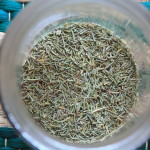I approach the summit of the mountain that we’re slowly scaling, 1 vertical kilometre of it, the air cold despite the heavy gaze of the South American sun. My thighs burn but carry me steadily, my breath laboured but sustained, having fallen into a natural, sustainable rhythm within the first few minutes. The altitude is 2700 m above sea level, roughly 10,000 feet, and although I’ve recently arrived from sea-level Toronto, my mitochondria-heavy thighs and I scale the mountain first, my boyfriend and his two able-bodied brothers, who’ve spent their lives at this altitude, lagging behind.
When I approach the summit, rewarded by a view and an old post-colonial cathedral to explore, I feel a sense of encouragement and accomplishment. My ego as inflated as my lower body and, momentarily, almost as strong.
Rewind to grade 9 gym class. My teenage classmates and I sit in the school weight room, hair up in the messy buns that were the disheveled-chic hairstyle of the time, wearing baggy t-shirts and trackpants. We sit in a semi-circle surrounding my springy and tiny gym teacher who is reassuring us that, if we make weight training part of our regular fitness regime, we need not fear the tyranny of a giant, boar-like figure. “I have been lifting weights all my life,” she tells us, “and this is as big as I’ll ever get.” This seems to calm the initial anxiety. After all, to a 14-year old girl, the importance of reducing the risk of osteoporosis pales in comparison to maintaining a demure, feminine figure. She pauses for a moment, overcome with a burst of honesty, “if you’re like Talia, however,” She continues, nodding in my direction, “you might be able to have thighs like this,” She holds her hands away from her delicate but defined gams, floating in a space that our imaginations are to fill in with bulging, ballooning muscle, just to visually indicate how big some thighs, my thighs, in fact, can get.
The sweatpants of the other girls in the class hang from jutted hip bones like elegant flowing skirts or Aladdin pants, interrupted only by their angular knees. Mine, however, refusing to fit the beauty standard, succumb to the defiance of my curves, which swell out of them, refusing to be forgotten under a pile of fuzzy fabric. I look down at my large thighs and then at the hidden ones of the girls around me. They don’t have thighs so much as continuity between knobby knees and angular hips. Their thighs have not yet been laden with estrogen-receptive fat cells, refusing to be easily mobilized with diet and exercise. Their bodies have apparently decided to give them more time before the baby-nourishing essential fatty acid DHA is laid down as a reservoir for years to be spent breast-feeing a growing infant. I, on the other hand, have been carrying around my future baby’s food stores since I was a child myself.
When I recently came across the term of a new “must have” body feature (as if these were things we could simply slip into and out of and then throw away for the new season when something more fashionable comes along), something called the Thigh Gap, I felt an unpleasant sinking sensation in the pit of my stomach that 8 odd years of body image self-work have failed to harden me against, it seems. The “thigh gap”, it turns out, is not a body part at all, but an area of negative space, nothingness – which is apparently what the female form has been reduced to – between the thighs when a woman (or rather, prepubescent girl) stands with feet or knees together. The female form has become so offensive in its possession of flesh and fat that we now, as a society, are forced to cherish the empty space around her, willing the rest of her to disappear completely, perhaps.
I can only imagine hearing about this phenomenon at the tender age of 14. I shudder thinking about how I would have been affected had this Pinterest and Tumblr-coveted body non-part been present during my fragile, hormonal prime.
I would have been devastated, primarily because it holds in great esteem an unachievable prototype of the body for my – and most of the females of the Homo sapiens species’ – genetics. But, when there is an outside force telling us that we must look beautiful and yet we don’t look beautiful because ______ (fill in the blank), it prevents us from loving all the parts of our physical self, wishing our bodies away into nothingness. This causes fragmentation in our sense of self and ability to self-love. It takes a great amount of self-love to be able to care for your health, your family, your friends, your society.
It’s been hard to love my thighs, even though the same, “unacceptable” thighs beat the boys to the top of a high-altitude peak. The same thighs who demand I frequently replace pants when the fabric between the legs wears thin because when I walk my thighs slide past one another, like two best friends rubbing shoulders, heads touching, refusing to give one another their space.
My thighs are best friends and, although I’m not as close with them as they are with each other, I’m trying very hard to enter into their inner circle. I’ve gotten closer to accepting them in the past few years and I hope that the 14 year-old girls of today, who happen to be endowed with thighs of thunder, can manage to do the same, ignoring the mainstream craving for holes of air in the space where flesh proudly hugs itself between closed limbs.






I love you Talia. You are a beautiful woman!!!!
Gracias, Seniorita Karin!
Mozart! I remember my surprise looking up ‘cleavage’ in an English dictionary to find that it meant not a part of breast or chest, but an absence. Defining women’s attractiveness by their absence seems a feature more prominent in advanced economies and higher classes, than in the rotund-bottom-loving societies.
Interesting. Perhaps a ruling class fear of flesh as a representation of sex? Or maybe as a sign of heightened self restraint in front of the abundance of food. Or as a status symbol, showing that, with a certain amount of money, the body can be smooshed into various shapes and sizes, according to what’s in Vogue. It’s a shame that fertility and vitality aren’t what’s celebrated when it comes to the female body, but a de-sexualized, androgenous frame.
When I was 16, I learned about the thigh gap from friends …and I know that it had a significant impact on the way I evaluated my body at the time. So sad.
I wish, instead of taking teenage gossip to heart, I had come across beautiful pieces of writing like this. They would have better influenced my teenage body image. 🙂
Thank you, Amy:)
I feel this article! I was always called “thunder thighs” growing up because I didn’t (and couldn’t) have those stick legs like all the other “popular” girls. What that did to my self-esteem is sad and it’s even sadder watching this generation of young girls fall apart to keep up with the trend! Articles like this need to be out there and loudly to let girls know that it’s what’s inside that makes you as a person, not the packaging on the outside!
Thanks for the comment, Lizh! It’s unfortunate that, although many body types are beautiful, we pick one extreme as a society and stick to it. It also sucks that appearance is SO important to the female gender as a whole. I could write about this topic all day, but I hope you and your magnificent thighs have a great day! Take care!
I feel this article! I was always called “thunder thighs” growing up because I didn’t (and couldn’t) have those stick legs like all the other “popular” girls. What that did to my self-esteem is sad and it’s even sadder watching this generation of young girls fall apart to keep up with the trend! Articles like this need to be out there and loudly to let girls know that it’s what’s inside that makes you as a person, not the packaging on the outside!